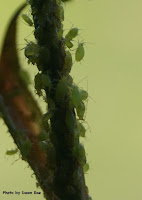 |
| Today's blossom on my balcony |
Location
I had previously thought hibiscus plants only grown in warm and exotic locations. On islands and beaches. But I began to notice them growing on beaches and near marshes locally. I love the blooms so much that I picked one up at a box store, for just a couple of dollars, and hoped for the best but expected the worst.My balcony is located in Maryland (zone 7). It gets cold here in the winter. Last year, I made the mistake of not bringing my hibiscus in during the winter and it froze to death. But the winter before that, I brought it in and placed it in a sunny, east window. That plant bloomed through the winter.
 |
| The plant that bloomed for me indoors |
Wherever you live, I suggest placing a hibiscus in a very sunny location. Mine loves my southwest facing balcony. I have also noticed that if they seem to do okay when I change their locations, and fairly quickly respond to a location they prefer. However, when I bring them inside, they look sickly for a short amount of time - before bouncing back.
 |
| Such a pretty and interesting flower |
Watering
Apparently, hibiscus do not prefer to be kept moist. I'm a neglectful plant owner and often let plants become far too dry. I notice that I've forgotten to water my plants when they start to droop. Then I give them a good soaking. The hibiscus bounces back and produces a ton of blooms.Container
Even though my hibiscus plants clearly do okay without daily watering, I do think they seem to do better in a self-watering planter. With these planters, I don't manage to let my plants die of thirst, and yet they aren't kept too moist. I think these planters are great choices for hibiscus plants.I did read somewhere that if you give a hibiscus an extremely large container, it will spend it's energy growing roots as opposed to flowers. And because I'm slow to move planters to larger containers as they grow, I think I've proven this theory to be correct - smaller pots equals lots of blooms.
 |
| Self-Watering Planter |
Related Links from Experienced Hibiscus Experienced Growers:
I do not expect you to take my word for it. In fact, if you bought a plant based only on what I say, I'd be a bit worried. So I highly suggest that you do some research and check out some of the following information. Or, do you own research.
But, I can assure you, the photographs in this article are of my hibiscus plants. I am confident that if I can grow healthy hibiscus plants, you will be able to also.
Hibiscus Care
Hibiscus in Pots: Container Growing
Tropical Hibiscus Year Round by the University of Illinois Extension


